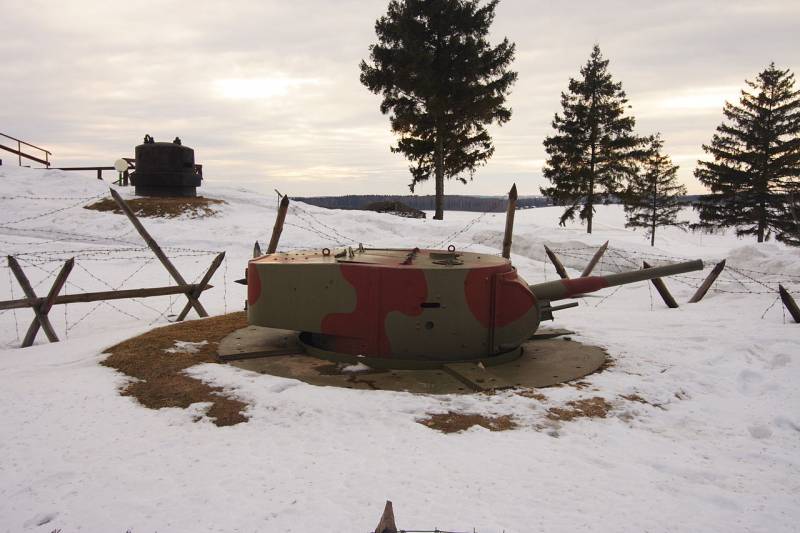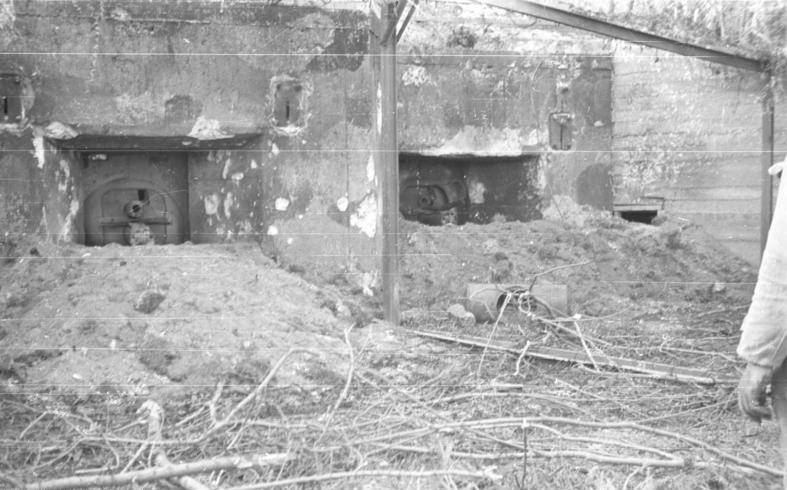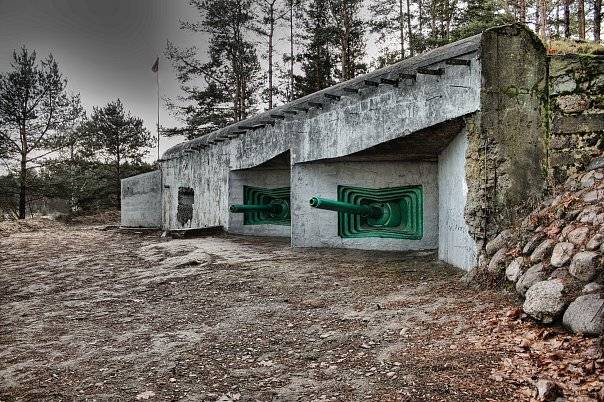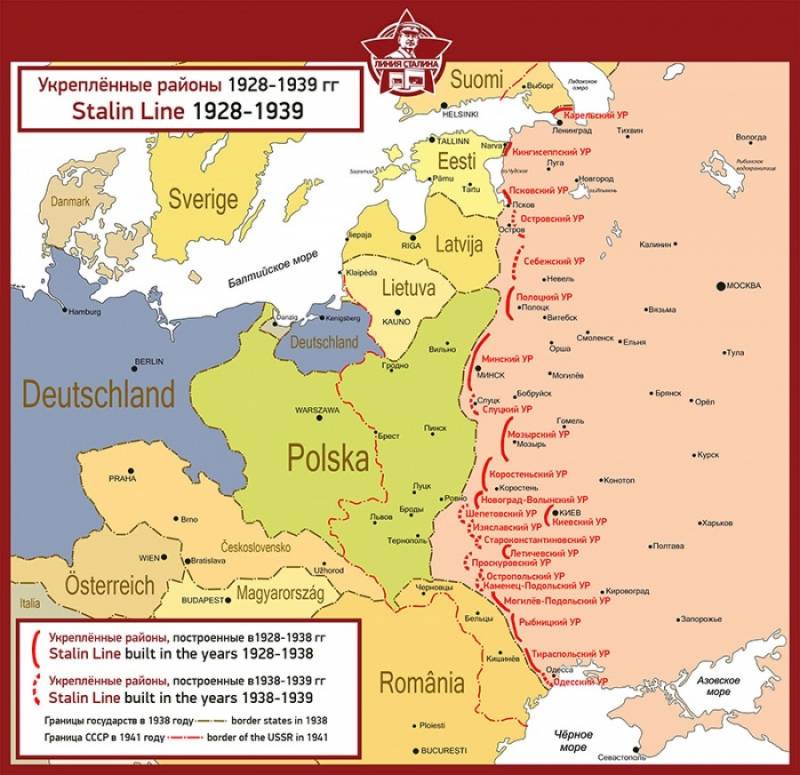Stalin's line helped disrupt the German blitzkrieg

Tower T-26 as a firing point of the Minsk UR. Stalin Line
Stalin Line
After the First World War, in which most of the war was positional and where fortresses and fortified areas played a huge role, the military was preparing for a new big war, following the example of the old one. The military theories of most countries did not take into account blitzkrieg strategies.
It was believed that at the beginning of the war, personnel formations and units would have time to occupy the border fortified areas (URs), strengthen them with field structures (trenches, communication passages, dugouts, barriers, etc.), and deploy artillery behind them. URs were supposed to receive echeloned logistical support. In a system with deployed troops, the URs were supposed to become impregnable for the enemy, as during the First World War. When the armies stormed the positional fortifications of the enemy for weeks and months and had minimal progress, suffering heavy losses.
As a result, many European powers built long-term defensive lines. In France, it was the Maginot Line built in 1928-1936. on the border with Germany; in Germany on the French border in 1936–1940 the Siegfried Line (Western Wall) was erected; Italy, on the border with Austria, Switzerland, Austria and Yugoslavia, erected an Alpine rampart; in Yugoslavia, it was the Rupnik line, built in case of war with Italy and Germany; in Greece, the Metaxas line, etc.
The Soviet Union also followed this path. After the military alarm of 1927, when there was a threat of war with England and Poland due to events in China, in the USSR, on the western border, they began to build URs from the Karelian Isthmus to the Black Sea. The total length of the defensive line was 1 km. However, passages were left between the URs, as a result, the length of the lines of fortified areas was 850 km.
Initially, 13 URs were built: Karelian, Kingisepp, Pskov, Polotsk, Minsk, Mozyr, Korostensky, Kiev, Novograd-Volynsky, Letichevsky, Mogilev-Podolsky, Rybnitsky and Tiraspolsky. In 1938, eight new fortified areas began to be built between the already existing ones: Ostrovsky, Sebezhsky, Slutsky, Shepetovsky, Izyaslavsky, Staro-Konstantinovsky, Ostropolsky and Kamenetz-Podolsky.
 Destroyed caponier installations of the 76-mm gun mod. 1902 on carriage arr. 1932. 12th Mogilev-Podolsky fortified area
Destroyed caponier installations of the 76-mm gun mod. 1902 on carriage arr. 1932. 12th Mogilev-Podolsky fortified areaURs were 50–150 km long along the front and up to 12 km deep. They tried to cover the flanks of the fortified areas with natural obstacles. Each UR protected important communications and had to hold out until the mobilization and deployment of the main forces of the Red Army.
According to German data (compiled after the capture of the Stalin Line "in 1941), in total on this line (not counting the Karelian UR) there were 142 casemates and positions for field artillery of 76 mm caliber, 248 casemates and bunkers for anti-tank guns (45 mm caliber) and 2 casemates and machine gun bunkers. Most of the long-term structures were in the Minsk UR - 572 artillery, 33 anti-tank, 114 machine-gun. According to the fortification historian D. Kaufman, the French Maginot Line had up to 401 structures per kilometer of front, and the Stalin Line - from 7,7 to 0,7.
After Russia in 1939-1940. returned to its composition Western Belarus and Ukraine, the Baltic states and Bessarabia, the Stalin line was mothballed and disarmed. On the new border, they began to build a new fortified line - the so-called. Molotov line.
It is interesting that in the USSR these fortified areas were never officially called the Stalin line. This name became widespread in Russia after perestroika and came from the West. So this line was called by the Western press and used in their memoirs by the German military leaders.
This name first appeared in December 1936, in an article in the Russian-language newspaper Segodnya, published in Latvia. Then this article was reprinted in the British newspaper Daily Express, and the term "Stalin's line" became widespread.

Artillery semi-caponier APK-1. 22nd Karelian fortified area
Value
The German army gained extensive experience in forcing fortified zones in Western Europe. The Germans actively used assault groups, sappers, who bypassed long-term fortifications, entered from the rear, used explosives, flamethrowers, gas grenades and fuel. Also in the course was heavy artillery.
Long-term firing points built in the 1920s-1930s could not resist guns with a caliber of more than 150 mm. The casemates of the URs were supposed to be supported by infantry and artillery, but the Soviet divisions, in the face of the enemy's rapid advance, often did not have time to occupy or create foreground and rear positions.
However, despite the fact that the Stalin line was disarmed, it played its part in the disruption of the German blitzkrieg. So, the Minsk fortified area, which turned out to be at the forefront of the enemy’s strike and was not fully equipped, fought from June 26 to June 29, 1941. The Germans during his assault lost more than 200 tanks, that is, an entire tank division. For example, during the 40-day campaign in France, the losses of the Wehrmacht amounted to 640 tanks. This led to the loss of time, the speed of the offensive. The capture of Minsk took place instead of June 27 only on June 29.
The report of the headquarters of the German 12th Panzer Division on the battles on June 27 and 28 in the Minsk fortified area reported:
Some garrisons of pillboxes fought to the last soldier.
Others closed the embrasures at the very first shot with direct fire and went on the attack.
Still others left the casemates and took up positions in the foreground, where they defended themselves with exceptional tenacity.
There were also such silent bunkers that they did not show any signs of life. But when the assault groups thought that the Russians had already been finished, they suddenly opened dagger fire at close range. Such "resurrected" pillboxes on the evening of June 27 did us a lot of trouble, which slowed down the division's advance.
Therefore, it is recommended to destroy all bunkers without exception by the forces of special sapper teams.
The Polotsk fortified area held back the enemy for 20 days, and the Kiev fortified area for more than two months.
Thus, the URs of the Stalin line played a role in disrupting the German blitzkrieg. If the Nazis passed the French Maginot line without problems, then they got stuck on the Stalin line for a period of 3 days to two months, losing a large amount of manpower and equipment.
The Red Army and the USSR gained valuable time by redeploying divisions from the rear military districts, mobilizing and evacuating. At the same time, the German headquarters had to adjust their offensive plans, temporarily postponing the offensive against Moscow and turning the strike formations to the south, to Ukraine.

Information